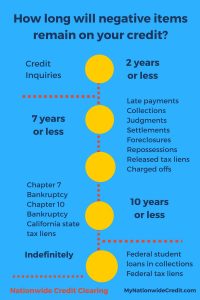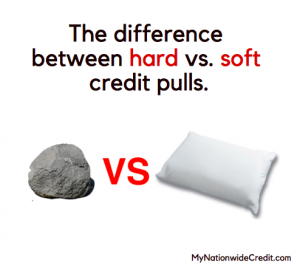-
Quick Contact
Get A free
Consultation Now!
Credit Education
As our society grows older, the financial burden looms.
 What’s the fastest growing societal problem in the United States, as well as around the world?
What’s the fastest growing societal problem in the United States, as well as around the world?
While there are plenty to choose from, unfortunately, the impact of an aging population may be the most significant challenge we face. From healthcare to retirement, social services to housing, as the average life expectancy grows and the roles and needs of our seniors change, this massive demographic shift is already causing cracks in the faultline of our economy.
But it was only a decade or two ago that the thought of seniors needing to carefully manage their credit scores, credit card debt, and student loans was virtually unheard of.
In this ongoing series, Nationwide Credit Clearing will dissect some of the facts, stats, and financial trends among seniors in the U.S. Aside from offering this education, we really want to help, so any senior can contact us for a completely free consultation and credit report.
10 Facts, stats, and trends in senior finances:
1. Between 2007 and 2016, the percentage of senior households (with members 75 and over) grew from 31.2% all the way to 49.8% – or nearly half.
2. The amount of debt is also skyrocketing in the average older households, from $30,288 in 2010 to $36,757 in 2016. In fact, among older households with debt, the median total has risen more than 2.5 times since 2001!
3. Likewise, in 1992, only 41.5% of senior households had any debt, but that number has now risen to 60%.
4. More than 40% of single adults also count on their monthly social security check for 90% of their living expenses and income. The amount of that check? Only $1,404, on average.
5. Medical debt is one of the fastest growing financial burdens. Consider that 84% of people 65 years or older face at least one chronic condition. But insurance is covering less and less of the cost for their care, so in the five years leading up to their death, the average senior racks up $38,00 in medical (or medical-related) debt, and 1 in 4 approach bankruptcy.
6. Even credit card debt is on the rise among seniors. In 2001, just less than a quarter (24.2%) of seniors had any credit card debt at all. Now, more than 1 in 3 (34.2%) carry balances on their credit cards that aren’t paid off monthly. In fact, seniors hold 50% ore credit card debt than members of Gen Y!
7. You may be shocked to hear that the fastest form debt among seniors is student loan debt! It’s true, as these days, 2.2 million Americans 60 or older are responsible for student loans. However, it’s not that these industrious seniors are going back to school. Instead, they’re cosigning for their children or grandchildren at rates that have tripled since 2005. And with minimum student loan payments averaging $700 a month and the younger generation having a harder time making ends meet or defaulting more and more, these seniors are assuming the financial burden.
8. The financial picture for more and more seniors is bleak. In fact, one-third of all senior households either is going into debt every month to pay basic living expenses, or just breaking even.
9. Even more distressing, 25 million Americans ages 60 and up are considered economically insecure – which is living at or below 250% of the federal poverty level (that comes to about $29,425 for a single person.)
10. If we look at the data on credit scores, we see that seniors have the highest credit scores of any generation. In fact, the average FICO for all consumers 70 and over is 747, while 60-69 year-olds have an average FICO of 722 (and it goes down to about 640 for those 18-29.)
However, that doesn’t tell the whole story, as seniors are now defaulting on their financial obligations and debts at an unprecedented rate. Facing massive healthcare costs and medical bills, rising credit card and student loan debt obligations, and a shortfall from social security and retirement planning, seniors are now in need of some credit score help like the rest of us.
***
Look for part two in this series about the financial burden that comes with aging. And remember that we really do want to help, so any senior can contact us for a completely free consultation and credit report.
What the wealthy OVERstand about money that the rest of us may not.
 The average person now has more knowledge available to them than any time throughout history, including plentiful wisdom about money, finances, and wealth. However, the income gap keeps growing in the U.S., with the rich getting richer and the typical middle-class family struggling just to make ends meet.
The average person now has more knowledge available to them than any time throughout history, including plentiful wisdom about money, finances, and wealth. However, the income gap keeps growing in the U.S., with the rich getting richer and the typical middle-class family struggling just to make ends meet.So what do the wealthy OVERstand about money that the rest of us may not?
1. Debt is dangerous
The number one principle of money that wealthy people understand is to not misuse debt. In fact, every time you use your credit card to make everyday purchases, you not only spend more than you would with cash (on those impulse purchases). You’re also essentially spending 110, 120, or even 130 cents on the dollar if you factor in interest charges and other fees. Wealthy people pay cash for their purchases and resist the temptation to use debt as a way to afford things they otherwise could not or should not.
Likewise, wealthy people understand that there is good debt (like mortgages, business loans), etc. that helps them achieve assets and investments, and bad debt (credit cards, car loans, etc.) and know how to utilize the former.
2. Your credit score is everything
Let’s say that before you even reached in your pocket and spent a single dollar on groceries, credit card bills, your mortgage or rent, insurance, or any other expenses, there was a number that basically ranked how much or little you should pay for those things. You would probably concern yourself with knowing and improving your ranking so you’d spend less, right?
Well, that’s exactly what credit score does. Rich people understand that credit score dictates so much of what we pay and even opens up remarkable financial opportunities if we have great scores, and therefore, make sure their FICO is fantastic.
3. Compounding and the time value of money
Would you rather have a penny a day that doubles every day for a month, or $1,000,000? Believe it or not, you’d miss out if you chose the quick seven-figure payout, as the first option would yield you $5,368,709.12 in those same 30 days!
Welcome to your first lesson in the time value of money, as your money will grow exponentially over time thanks to the magic of compounding. For that reason, the wealthy aim first to eliminate debt, buy their own home, and obtain assets like stocks, bonds, and other investments that will grow for them over time (more on the ‘time’ part later).
4. Don’t forget about taxes
It’s not what you make but what you keep! What good is a job that pays you $50,000 a year if you give 30% of it away for taxes (for example) when you could have a $40,000 job but pay in a much lower tax bracket? Wealthy people are always aiming to maximize their returns (make more) and minimize their liabilities (spend less) and saving on taxes is a huge part of that.
And when it comes to that yearly tax return you may be getting back, do the right thing with it and pay off debt and put some in savings!
5. Buy a home!
Homeownership always has been (and always will be!) part of the American Dream. It’s not only nicer living in your own place, but the financial advantages are impossible to ignore.
When you ow your own home and pay a mortgage every month, you’re paying off what you owe on the home (over 30 years), so it’s sort of like a forced savings plan.
Likewise, homes have appreciated in value over any 10-year period throughout modern U.S. history, so purchasing a home early and paying it off allows you to retire without having to pay mortgage or rent (and then you can leave it to your children). Likewise, owning a home offers one of the biggest tax breaks you’ll ever get from Uncle Sam, too.
Meanwhile, the alternative is to keep paying rent to your landlord every month, which yields you no appreciation, you’re not paying anything down or building any equity, and you’re missing out on tax breaks. The wealthy aim to be landlords; not pay a landlord!
6. Save first
Sure, we know that when your paycheck arrives once or twice a month, it’s probably already spent and accounted for before you can even cash it. But wealthy people become that way by making sure they save first. In fact, most financially stable people utilize auto-withdrawals from their paychecks to put some money into savings, pay bills, and maximize their investments – before they even see any money from their paycheck. Doing so takes some discipline and sacrifice, but the results will pay off big-time!
7. Education never ends
We all have 24 hours in every day, but instead of gossiping, wasting time arguing on Facebook, and watching funny cat videos, wealthy people invest their time in learning and growing. That can be learning new job skills, going back to school for another degree, or just reading, listening, and watching inspirational and educational messages. Of course, many of those are about improving their finances, so pat yourself on the back for reading this blog!
***
If you’d like more information about credit, debt, and putting yourself in a better financial position, contact us for a free consultation and credit report.
How long will negative information stay on our credit reports?
 How long will negative information stay on our credit reports?
How long will negative information stay on our credit reports?
Did you miss a credit card payment, have a bill go to collections, or even had to file bankruptcy recently? If so, your credit score has probably taken a pretty big hit. You’re also probably wondering when it will stop showing up on your credit report so you can move on.
Luckily, negative information that’s reported on your credit doesn’t last forever. In fact, we know the timeline when they will “fall off” and not be reported anymore thanks to the Fair Credit Reporting Improvement Act of 2014, which defines the timelines for how long negative information can remain on your credit file.
Here’s a rundown of how long common items will remain on your credit report, where they very well could be hurting your score:
Credit accounts
Credit cards, store cards, retail accounts, auto loans, and other credit accounts that are paid on time can keep reporting on your credit for up to 10 years from the date of last activity.
Late payments for credit accounts
However, if you missed payments or failed to pay on time, that negative data will also be reported, but for a period of 7 years (starting from the exact date the account was first past due.)
Late payments for other debts
While late payments on common credit accounts will show up for 7 years, those same rules don’t apply for revolving or installment loans. In fact, if you have a revolving or installment debt that is now current but does have a late payment some time in the past, that negative item (late payment) will appear on your credit report for 10 years past the date of last activity.
While it may get a little confusing, the late payment history will be removed for these installment and revolving debts after 7 years, but the reporting for accounts that are current will show up for 10 years.
Collections
Collection accounts usually will show up on your credit report for a full 7 years after the date the account first became past due. Remember that the date it was past due will be earlier than the date it was sent to collections, which could be 90 days or more after that.
Bankruptcies
If you’ve been through a chapter 7 bankruptcy (most common for consumers), a chapter 11 bankruptcy, or a non-discharged or dismissed chapter 13 bankruptcy, that will typically keep reporting for 10 years from the date the bankruptcy was first filed (not the date they were discharged).
However, chapter 13 bankruptcies that have been discharged can only stay on your credit report for 7 years from the date they were first filed.
Public Records
Judgments usually stay on your credit report for 7 years after the date they were filed, whether you have satisfied (paid) them or not.
If you have a tax lien and then pay it off in full, the lien will still report on your credit for 7 years from the day it was satisfied.
However, tax liens that go unpaid (unsatisfied) will stay on your credit report indefinitely – which means that you’re stuck with them until they’re paid off.
Inquiries
When a third-party requests a copy of your credit report (usually a lender, retailer, or employer), that activity shows up on your credit report, and can possibly impact your score. But the good news is that there’s usually not a big hit, and the credit bureaus only keep this on your report for 1 or 2 years.
But there are different types of credit inquiries that might have different reporting timelines. For instance, promotional inquiries (when you received a pre-vetted offer for credit) don’t affect your score and generally remain on your credit for only 12 months. When one of your current creditors performs a review of your account, it also does not affect your score and remains for 12 months. Finally, when you request a copy of your own credit report, it does not affect your score and will remain on your credit file for up to 24 months.
However, there are some slight variations on these timelines depending on state law:
For instance, in California, paid or released tax liens will stay on your credit file for 7 years from the date released, or ten years from the date filed. And unpaid tax liens remain on your credit file for only ten years from the date they were filed – not indefinitely.
New York State residents see their satisfied (paid) judgments only remain on their credit file for 5 years and paid collections only reporting for five years from the date of last activity.
***
I know – that’s a lot to remember. So we’ve put together this easy list so you can quickly see how long a certain negative item will stay on your credit report:
The item remains two years (or less);
Credit Inquiries
The item remains no more than 7 years:
Late payments
Collections
Judgments
Settlements
Foreclosures
Repossessions
Released tax liens
Charged off accounts.
Note: the timeline begins from the date of default OR 180 days after the date of the first delinquency that eventually went to collection.
The item remains no more than 10 years:
A Chapter 7 bankruptcy can remain on a credit report for up to 10 years from the date it was first filed.
A Chapter 13 bankruptcy can also remain on a credit report for up to 10 years.
The item will remain indefinitely (until paid):
Federally guaranteed student loans that are unpaid and in default can remain on a credit file indefinitely until such time as they are paid.
Unpaid tax liens may report on a credit file indefinitely.
***
Remember – there’s another way to get rid of negative items that are reporting on your credit BEFORE they naturally fall off after all of these years! Contact us for more information!
The difference between hard and soft credit inquiries.
 Most people check their credit periodically, such as when they’re about to apply for a big loan, once a year, or every four months (like you should). But you may not realize that a whole lot of others are checking your credit – and probably on a more frequent basis. In fact, every time you apply for a credit card, submit an application for a student loan, take out a store discount card, or even apply for insurance or rent a new apartment, your credit is probably being pulled.
Most people check their credit periodically, such as when they’re about to apply for a big loan, once a year, or every four months (like you should). But you may not realize that a whole lot of others are checking your credit – and probably on a more frequent basis. In fact, every time you apply for a credit card, submit an application for a student loan, take out a store discount card, or even apply for insurance or rent a new apartment, your credit is probably being pulled.
Those credit pulls also can ding your credit score, if not handled correctly. Sometimes, that’s inevitable, and other times it’s avoidable. But it’s important to understand the facts about hard and soft credit inquiries, or credit “pulls.”
In fact, only 26% of women and 31% of men know the difference between “hard” and “soft” credit inquires, or credit “pulls.”
So today, we’ll give you some fundamental information about credit inquiries, both hard and soft. Contact Nationwide Credit Clearing if you have further questions about credit pulls, and would like a free copy of your credit report and consultation with a credit expert!
Hard credit pulls:
Hard credit pulls only take place when you apply for new credit accounts.
Or, a hard pull will occur when one of your existing creditors decides to pull your credit. In fact, most creditors can access your credit any time, for any reason they deem, without needing your permission first.
Creditors commonly do this when they’re reviewing your account to consider an increase to your credit line.
Soft credit pulls:
Sofer credit pulls, however, can occur either with inquiries where the consumer voluntarily agreed to have their credit accessed, or other involuntary inquiries.
For instance, soft pulls usually take place when you’re applying for a new job, a cell phone account, trying to rent an apartment, etc.
Effect on credit score:
There is no one set rule for how credit pulls will affect your score. But, typically, hard credit pulls will only have a slightly negative impact on your credit score, possibly dropping your score a few points in the short term.
Typically, your FICO score can go down about 5 points per inquiry if you have your score pulled too much by the wrong vendors. The drop could be greater if you have few accounts or a short credit history without seasoned, positive factors to compensate.
In fact, the negative effect of hard pulls usually last only one year, but most of the damage disappears within the first 90 days.
Are all credit score pulls considered equal?
Since credit scoring is primarily a means of gauging the risk of default, consumers with high credit scores will suffer a little more damage from hard credit pulls. That’s because the credit algorithms consider the fact that they’re getting their credit pulled atypical, and more of a red flag.
So the higher your score to begin, the more damage a hard credit may do.
Additionally, unsecured credit inquiries, like you’ll find with personal credit cards, retail cards, and in-store accounts, will cause the most damage to your score.
When current creditors pull your credit:
We are certain that soft credit pulls have a negligible negative effect on credit scoring – or none at all. That’s the reason why most of your current creditors will only order soft credit pulls on your account, not hard pulls.
Current creditors usually also do a soft pull every month or so, although some check up on their consumers much more frequently.
Some credit pulls always act as hard inquiries, some are always soft injuries, and some can show up as either/or.
Hard pulls are most often found with:
• Applications for new credit cards
• Requests t activate a pre-approved credit offer (such as you receive in the mail)
• Applying for a new cell phone account and contract
Soft pulls are most often found with:
• Background checks by potential employers
• Your bank verifying your identity
• Initial credit checks by credit card companies that want to issue you preapprovals
Who can pull your credit, whether through hard or soft inquiries?
Lenders
Mortgage companies
Student lenders
Banks
Credit card companies
Financing departments of retail stores
Auto dealerships financing departments
Utility companies
Cell phone companies
Employers
Landlords
Insurance companies
Collection agencies
Child support agencies
Court agencies
Anyone with “Permissible Purpose,” as deemed by the Federal Credit Reporting Act.
Timing is everything with credit pulls:
Timing is so important when it comes to credit pulls. The more “bad” inquiries that appear on your report within a short time, the bigger hit to your score. For instance, if you apply for five new credit cards within a two-week period, it definitely is seen as risky to the credit bureaus, and your score will drop accordingly.
However, the credit bureaus do account for consumers who want to “shop around” for large and important loans, like mortgages, business loans, etc. Of course, shopping for the best rate on a single loan (not applying for multiple loans at once) means getting your credit score pulled several times within a short period, but the good news is that this practice won’t hurt your credit score.
In fact, the credit bureaus typically just count this group or batch of inquiries as one if they’re within a 30-day period (or a 45-day period with some credit scoring versions).
So, if you’re shopping around for the best rate on an important loan, try to contain all credit pulls to within a 30-day period to keep your score in good order!
***
Contact Nationwide Credit Clearing if you have further questions about credit pulls, and would like a free copy of your credit report and consultation with a credit expert!
10 More things you didn’t know about credit scores, credit reporting, and debt in America
 Your credit score impacts so much in your life these days, from rent and homeownership to credit card approvals, interest rates on student and auto loans to even employment. But too often, we’re still in the dark when it comes to credit scores, credit reporting, and general financial knowledge about debt management.
Your credit score impacts so much in your life these days, from rent and homeownership to credit card approvals, interest rates on student and auto loans to even employment. But too often, we’re still in the dark when it comes to credit scores, credit reporting, and general financial knowledge about debt management.
As the nation’s leader in credit repair solutions, Nationwide Credit Clearing is committed to help educate you about these important topics. This is part two of our ongoing series, 50 things you didn’t know about credit score, credit reporting, and debt. Look for part one here, and contact us if you have any questions or credit issues at all!
1. Which company earns the title as the most popular credit card in the rest of the world? That honor belongs to both Mastercard, which has 551 million cards issued throughout the world as well as 180 million cards here in the United States. However, Visa wins top-dog honors on home soil, with 278 million cards floating around the U.S., as well as 522 in the rest of the world.
2. It’s no surprise that people often turn to their credit cards to pay bills and living expenses once they are unemployed, In fact, 86 percent of low and middle-income households who have a working member that is now unemployed turn to credit cards to fill the gaps monthly.
3. Likewise, almost 50 percent of low and middle-income households now are carrying credit card debt that comes from out of pocket payments they have to make on medical bills and expenses.
4. It’s interesting to look at a map and compute the average credit score for each state (OK, I don’t get out much!). In fact, the states with the lowest average credit scores are in the south and southwest, including New Mexico, Texas, Oklahoma, Arkansas, Louisiana, Mississippi, Tennessee, Georgia, Alabama, South Carolina, Nevada, and Florida. In those states, an alarming 40 percent of the population have subprime credit scores!
5. However, the states with the highest average credit scores are found in the north and midwest. Minnesota and North Dakota are the states with the highest average credit scores, with 707 and 700 average FICOs, respectively.
6. Aside from the state you live in, there are some other puzzling correlations between the heights of your credit score and your seemingly unrelated behaviors. For example, one study found a direct correlation between credit scores and which email provider the participants used! They found that Comcast email user (692 average) and Gmail, (682) have above average scores, but MSN (669), Aol (668) and Yahoo! (652) email users have below average scores.
7. But more common-sense correlations also apply. For instance, there are significant differences in credit scores based on age. Baby Boomers and the Silent Generation (68-85 years old) have average scores of 700 and up, while Gen Xers average a 655 score, Millennials average a 634 score, and Gen Z is lagging with a 631 average Vantage Score.
8. One correlation that we could have easily predicted is that between scores and homeownership, In fact, a Federal Reserve study found that the average credit score among homebuyers and homeowners is 728 – significantly higher than the national average. Additionally, they found that only 6.8% of homebuyers or homeowners had scores below 620 in the study.
9. We hear about our credit scores impacting home ownership, credit cards, interest rates on other loans, renting, and even employment. But did you know that your credit score can make a big difference on…your dating life? It’s true! According to a 2016 Bankrate survey, almost 4 in 10 U.S. adults say that they’d rather date someone with a good or excellent credit score, but they’d be wary of dating a sup-prime suitor. In fact, 43% of women and 32% of men said that a person’s credit would have an impact on if they dated them.
10. Americans are still pretty mixed up, confused, and turned around when it comes to basic knowledge of credit scores and credit reporting. In fact, studies have shown that of an average sample Americans, 47% didn’t know that credit scores are used by non-creditors like electric utilities and home insurers, 68% didn’t know that cell phone companies use credit scores, and 32% had no idea that landlords could check their credit!
***
Do you have questions about your credit or looking to improve your score? Contact Nationwide Credit Clearing for a FREE credit report and consultation at (773) 862-7700 or mynationwidecredit.com!
Are Americans illiterate when it comes to credit, credit scoring, and finances?
 As a nation, are we credit illiterate?
As a nation, are we credit illiterate?
And if so, how much is it costing us?
Let’s start with that second question, which is easy to answer.
According to Marketwatch, the lack of financial literacy by the average American has cost us a collective $200 billion over the last 20 years! That’s the estimated cost of paying higher interest rates, late fees, not saving for retirement, and the impact of bad decisions caused by living paycheck-to-paycheck.
That comes to $20 billion each year from our lack of financial knowledge – including illiteracy when it comes to credit!
Likewise, The National Financial Educators Council just released a survey that found the average respondent lost $9,724 each year due to their credit and money illiteracy! That backs up the findings of another national study that found that with a mere 20-point increase to our average national credit score, each adult in the U.S. would save almost $5,000 each year!
Now, let’s try to answer the first question we posed, are we just as financial illiterate when it comes to credit scores – or credit illiterate?
On first glance, we might not think so. In fact, the average FICO score reached 700 for the first time ever in 2017, which is a very good score.
But there’s a lot more to the story.
Only 58 percent of Americans have a credit score above that golden 700 number.
And consider that 60 percent of American adults haven’t checked their credit report in the last 12 months, and 66 percent haven’t checked their credit score. That’s about 2/3 of all Americans that don’t even know what’s going on with their credit!
Only 32 percent have received a copy of their free credit report over the last year, and nearly one-in-five Americans haven’t pulled their credit in the last three years!
What’s even scarier is that about 1/3 of all American adults surveyed said that they really didn’t see any reason to pull their credit report or check their score.
Additionally, 56 percent of respondents confessed that they had no idea their credit score was the most important factor when applying for new debt like a mortgage, car loan, or credit card.
And while our national average may be healthy, there’s a wide discrepancy between credit score haves and have-nots.
According to Experian, almost 1/3 of all Americans (30%) have a credit score lower than 601 – which is considered sub-prime. VantageScore also estimates that of the 220 million U.S. adults, 68 million of them have poor or bad scores.
But this isn’t just a snapshot of the good and bad when it comes to credit because we have to factor in those who are credit invisible, too.
Studies have found that about 26 million U.S. adults are credit invisible. While this means that they don’t even have enough of a credit history to garner a score, it’s effectively the same thing as having terrible credit.
Many people are also denied credit even though they want more of it. A reported 67 percent of people who applied for new credit cards in 2015 were denied, and one out of three were approved but for a lower available balance than they’d requested!
Younger adults are really scoring an F when it comes to credit score literacy.
An alarming 68 percent of Americans make at least one significant and costly financial mistake before they even hit the age of 30! These mistakes often cost them dearly as they’re trying to start down the right financial path, and credit score blemishes make take seven to ten years to fall of their reports.
But that doesn’t stop young people from getting credit, as 50 percent of respondents said that they received their first credit score by the age of 21, even though 72 percent had no financial education at all before going to college!
Millennials and Gen Xers are also taking out more debt than ever thanks to student loans, not credit cards. In fact, student loan balances are at an all-time high, with the average student loan balance at $23,186. Our national student loan balance is now $875 billion – higher even than credit cards – and increasing at a rate of $2,853.88 every second!
But it’s not just younger people that are fumbling when it comes to debt, especially credit cards. Seventy-seven percent of us have a credit card, and the average U.S. adult with credit card debt owes $16,048. With a sizable average interest rate of 13.66%, that means $183 is accumulated in interest every month.
One in three carry a balance month-to-month without paying it off, often paying just the minimum payment.
Even worse, nearly 16 percent of people with a credit card balance don’t even know their card’s APR, or true interest rate, and that’s even more prevalent (21 percent) among lower-income households.
So if we’re so credit illiterate, what’s the solution?
It seems the simple fix is just to start teaching financial education in schools. In fact, 99% of adults surveyed thought it would be a good idea to teach about credit, debt, interest rates, personal finance, and credit in high schools or even earlier.
However, the plan runs into a snag when you consider that only 1 in 5 teachers feels qualified to teach a class on financial or credit education!
***
Until they start making the grade, the better solution is to contact Nationwide Credit Clearing for a free copy of your credit report, a complimentary consultation, and the #1 credit repair firm in the country!
15 Things to STOP doing that are still making you broke! (Part 2)
 Most of us have high hopes for a better financial situation this year. For some, that may mean saving more; for others, landing a better-paying job; and homeownership is still the American Dream for most families.
Most of us have high hopes for a better financial situation this year. For some, that may mean saving more; for others, landing a better-paying job; and homeownership is still the American Dream for most families.
But before we can tackle this financial Bucket List and move forward, it’s important that we identify the money mistakes that we’re making that are continuously setting us back. We’ve identified 15 things that are common among the average American consumer, causing them to always be short on cash!
So, if you want this year to be your best yet for your finances and finally turn around your money mistakes, stop doing these 15 things!
In part one of this blog we covered the first seven things to stop doing if you don’t want to be broke, and here are the next eight:
- Not improving your credit score
Your credit score dictates so much about your financial picture, from credit card interest rates to mortgage payments, student loans to auto financing. But it also influences your insurance premiums, utility bills, and can even prevent you from getting a new job!
In fact, it’s estimated that for every 20 points you improve your credit score above sub-prime, you’ll save an average of $10,000 in interest and payments over the course of your life as a consumer!
The first step to improving your finances is always to take account of your present situation, so contact us for a free credit report and consultation!
- Not educating yourself about finances
Should you lease a car or buy it? What’s the best home loan for you? Should you be investing your money first or paying off your existing debt? From saving for retirement to healthcare options, choosing the right credit card to filing your taxes correctly, we can all stand to learn a lot about money.
However, too many people neglect to educate themselves when it comes to financial matters. Even worse, they often make critical financial decisions based on rumors, advice from their “expert” neighbor, or water cooler talk from coworkers. In fact, the average person spends much more time planning their vacation every year than they do planning for retirement!
Instead, empower yourself and make sure you have the best information to build a strong financial future by reading articles, credible blogs, books, and watching personal finance videos. You’ll be amazed what you learn in a very short time!
- Renting instead of buying a home
Home ownership is still the American Dream, and for good reason. In fact, there are a wide range of benefits to owning your own home instead of renting, from social, community involvement, family and, of course, financial advantages.
When you have a fixed rate mortgage, your monthly payment will never go up, but you’ll actually being paying it down to $0 over the years, owning your home free and clear. But when you rent, the monthly price can and will go up periodically, and you’re amassing no equity, no appreciation when the value goes up, and don’t even get tax advantages.
Studies show that the average homeowner has a 3.5x higher net worth than the average renter, as well as more savings, more funds for retirement, and pay less in total taxes. Their children are also more likely to do better in school, more likely to graduate from college and enjoy a much more stable and happier home life.
These days, with mortgage loans that are geared towards first-time buyers that require low down payments, there’s really no reason NOT to buy!
- Not planning for the future
Do you enjoy going to work every day, working long hours, coming home exhausted, and still only bringing home enough to live on until the next paycheck?
Well, get used to it, because many of us will be working way past traditional retirement age, or even well into their senior years. There’s no denying that Americans aren’t putting enough away to retirement comfortable any 65 (or anywhere close!). In fact, 40% of the workforce have nothing saved for retirement, and 60% aren’t on track.
But here’s the good news – you still have time to save, and the time-value of money dictates that the earlier you start investing, the faster your money will grow. So make sure you deduct the maximum retirement savings form your check, definitely take advantage of any employer matching, and focus on savings and acquiring assets that produce cash flow – not racking up debt and liabilities. You’ll thank me once you can retire on schedule!
- Straight up wasting money
New polls show that we have learned our lesson from the past recession. In fact, 55% of households are still spending more than they take in every month (the difference made up in debt), and our personal savings rates are at a rock-bottom 2.2% annually.
Of course, many of our costs – from rent to health care to food – have increased sharply over the last few years, so it always feels hard to get ahead. But we’re still spending – or wasting – money on a ridiculous list of things that show that we’re living well above our means.
Sure, the average person has a closet full of new clothes they hardly wear, but we’re even talking about things more substantial. For instance, it’s estimated that Americans spend $443 billion every year in wasted energy bills, with most people overpaying by a whole one-third!
And we’re all eating out at restaurants and on the go WAY too much, which is costing us.
The average American household now spends $6,759 on food every year but $2,787 of that total is for meals in restaurants or outside of the home. We also spend an average of $1,200 on fast food every year – or $117 billion!
We also spend $65 billion on soft drinks and $11 billion on bottled water every year, we dump countless billions gambling, and this one will blow you away: the average cigarette smoker puffs away 14% of their total income on cigs every year, which adds up to about $80 billion, or 1/7 of our total discretionary income budget!
Stop wasting your money on things you don’t need – and won’t even miss!
- Paying too much for your car loan (not your car)
Of course, we all need transportation to get to and from work, school, and home. And transportation costs actually remain reasonable, with low gas prices and car buying easier than ever. In fact, it’s not the cost of cars that’s eating up our budget, but the high price of the financing we’re using to purchase them.
In fact, the average monthly payment for a new car is now almost $500, as the typical car shopper is financing $28,524 at 16-28% interest rates over terms of 73 to 84 months! Ouch!
So before you go shopping for a car, talk to Nationwide Credit Clearing about improving your credit score so you’ll qualify for a better auto loan. Then, you’ll be free to purchase that fantastic new car – on your terms!
- Paying late
It’s hard enough to manage our finances and get ahead without choosing to spend more, but that’s exactly what we do when we pay our bills late.
In fact, about 1 in 4 U.S. adults don’t pay their bills on time, and only half of 18 to 34-year-olds do so. When we pay late, whether it’s a credit card, a phone bill, or our rent or mortgage, we get hit with unnecessary late fees.
The typical American pays $250 each year in late fees just to their bank! So always pay on time if you don’t want to be broke!
- Getting whacked with unnecessary fees and charges
Likewise, overdraft fees, ATM fees, and other extraneous fees from financial institutions are really putting a dent in our wallets. Banks charge their own consumers an average of $412 in overdraft fees every year, adding up to about $33 billion annually!
We also pay about $329 per year in ATM fees, and they’re often tacking on charges just for doing business with them on many checking and savings accounts! Make sure to read the fine print and pay attention to how much you’re wasting in fees!
***
Improve your finances this year starting with a free credit report and consultation from Nationwide Credit Clearing!
25 Facts about the U.S. auto industry (including how a good credit score will save you a lot of money when buying!)
 Since 1908 when Henry Ford rolled out the first Model T from his Detroit production line, America has been one of the world leaders in manufacturing and selling cars.
Since 1908 when Henry Ford rolled out the first Model T from his Detroit production line, America has been one of the world leaders in manufacturing and selling cars.
Here are 25 facts about the auto industry – including car loans and how a good credit score can save you a lot of money when buying!
1. In 2017, we bought a lot of cars! In fact, 6.2 million new cars were sold, as well as 11.1 million SUVs and light trucks, adding up to approximately 17.3 automobile transactions.
2. Considering that there are approximately 323 million people in the United States, that means more than 1 out of every 18.6 people bought a brand new car…just this year!
3. While those numbers are impressive, they’re slightly off of the high point of auto sales in 2016, when nearly 17.5 million light passenger vehicles sold, as well as 17.4 million in 2015.
4. Worldwide, 78.6 new cars sold in 2017!
5. In 2017, the motor vehicle industry (including manufacturers, dealerships, used part dealers, service centers, etc.), employed almost one million U.S. workers (approximately 940,000).
6. In fact, the auto industry is responsible for about 3 to 3.5% of our entire U.S. gross domestic product.
7. We also manufacture a lot of cars in the United States these days. In fact, nearly 12 million light passenger vehicles were built in the good ‘ole U.S. of A last year.
8. At least 2.1 million of those automobiles were exported and sold abroad, spanning almost every country in the world for a total value of $57 billion.
9. Additionally, the secondary automobile parts export market is worth an impressive $80 billion, and we also exported $5.5 billion in used cars.
10. While that’s a whole lot of new cars, the U.S. is still second to China for automobile markets, both in terms of sales and production.
11. Of course, a lot of car sales mean a lot of car sales dealerships. In fact, there are currently 18,250 new vehicle dealerships in the United States.
12. According to government estimates, there are about 222 million licensed drivers in the United States, which means that about 69% of our country has a driver’s license.
13. We also know that there are approximately 260 million passenger cars, trucks, and SUVs on the roads, which adds up to 1.24 automobiles for every person with a driver’s license in the U.S.!
14. In fact, there are 260,350,940 registered vehicles in the United States, which is an all-time high.
15. That also accounts for 20 million more automobiles than 2007, and in 1990 there were only 193 million registered autos in the U.S.
16. But the car market is still heating up around the world, with new car dealers expected to bring in 916 billion by 2020, with used car sales following with 106.6 billion in sales.
17. An interesting data point is the Scrappage Rate, which measures the number of cars sent to junkyards and put out of service every year. Over the last couple years, the Scrappage
18. Rate fell to only 11.5 million annually, a record low when compared to the number of cars on our highways and roads.
19. If we look at the monthly budget of the average America, their rent or mortgage payment tops the list, but transportation costs (including car payments) comes in second.
In fact, when added together, housing and transportation account for about 50% of the typical American’s income.
20. The average American’s monthly spending chart looks like this (based on a $51,442 per capita): income:
33% Housing, $16,887
17% Transportation, $8,998
13% Food, $6,599
11% Insurance, $5,591
7% Health Care, $3,556
5% Entertainment, $2,605
3% Clothing, $1,736
11% Total other expenses, $5,470
21. While we may be buying new cars at record rates, we’re still using financing to purchase the vast majority of them. In fact, in 2017, auto lending hit a new record with more than $1.1 trillion in car loans owed by consumers!
22. In fact, the average person with a car loan now has $18,694 in auto debt, and the average new car came with a sticker price of about $35,000 in 2017.
23. But last year, the average person who financed their car purchase borrowed $30,032 in loans (the first time that average exceeded $30,000). The average monthly payment for a new car loan is now $503, the first time that number has risen over $500.
The average loan term is now 67 months (5.58 years) for new automobiles and 62 months (5.16 years) months for used autos, both record highs.
24. However, car loans are being extended to people with marginal or even poor credit scores like never before. These days, almost 20% of all auto loans go to people with credit scores of 620 or less – called “subprime” (a score of 680 is typically considered good.)
According to Experian, 19.3% of auto loans now go to consumers with subprime or deep subprime credit scores. That means less than two-thirds of auto loan borrowers (61.3%) have prime or super-prime credit.
25. There’s no denying that it’s a great feeling to buy a new car, and reliable transportation is a must for most of us. However, subprime auto loans tend to come with sky-high interest rates and cost us way too much in total interest. For example, a person financing a $23,000 car might spend $9,615 just in interest with a 66-month loan at 14.99 percent!
***
So, in order to get a great car loan, have a better monthly payment, save a lot in total interest, AND get that beautiful new car you love (and deserve), talk to Nation Wide Credit Clearing first about improving your credit score!
50 things you didn’t know about credit scores, credit reporting, and debt. (Part 1)
 1. The first credit card ever was released in 1951 and issued by the American Express company.
1. The first credit card ever was released in 1951 and issued by the American Express company.
2. People often talk about their “credit score” as if they had just one. In fact, there are more than 100 credit scoring models used by banks, lenders, and financial institutions.
3. But FICO is the biggest and most recognizable credit scoring model. FICO is an acronym for the “Fair Isaac Corporation” and is based on the risk-predicting algorithms developed by mathematician Earl Isaac and engineer Bill Fair in 1956, and then rolled out in the 1980s as a credit scoring system.
4. Did you know that these days, credit scores are even influencing people’s dating decisions? It’s true, as surveys show that the majority of people would consider someone’s credit score before dating them or getting in a relationship. There’s even an online dating site called CreditScoreDating.com with the motto, “Credit Scores are Sexy!”
5. Millennials – and especially college kids – are really missing the boat when it comes to keeping good credit scores. In fact, Millennials have the lowest Vantage credit scores of any generation, including Gen X (ages 30-46), Baby Boomers (47-65), and the Greatest Generation (66+).
6. Speaking to that point, surveys show that 85% of U.S. college students don’t even know their own credit score!
7. These days, your credit score impacts far more than just buying a house or getting a good rate on your credit card, as many employers now check the credit reports of their potential applicants. In fact, 1 in 4 Americans looking for a job have been subjected to a credit check, and 1 in 10 has been disqualified from getting hired because of something on their credit report!
8. According to reports by the Department of Labor, occupations that routinely check a job applicant’a credit include: 1) parking booth operator, 2) the military, 3) accounting, 4) mortgage loan originator, 5) Transportation Security Administrator (TSA), 6) law enforcement and 7) temporary service positions and many more.
9. FICO scores are based on a complex (and secretive_ algorithm that factors every nuance of credit behavior from tens of millions of consumers. Their programs then look for patterns that will help them predict future defaults (or on-time payments) for borrowers, which they then translate as a numeric spectrum of risk for lenders, or your credit score.
10. These days, an estimated 33% (one out of every three) of all American adults do not pay their bills on time every month!
11. How much bad credit card debt do the big banks take a loss on every year? Last year, the top 100 banks in the U.S. had an average charge-off rate of 3.87%, which means that nearly 4 out of every 100 people don’t pay,
12. Last year, the average Annual Percentage Rate (APR) for all U.S. credit cards was 13.14% – another great reason to build up your credit score and get out of debt this year!
13. About 19 countries around the world use some form of FICO scores, and many more have their own credit scoring system.
14. Nearly two-thirds of U.S. adults – or 144 million people – haven’t even looked at their credit report within the last 365 days.
15. And one-third of working-age Americans don’t even have a clue what their credit score is!
16. Visa is by far the biggest credit card in the U.S., with 278 million cards at home (that’s about one for every adult in our population!). Mastercard is next with 180 million cards
But while Visa has 522 million cards across the globe, MasterCard just beats them out with 551 million cards abroad.
17. Visa is also the largest credit card in the U.S. by sales volume, with $981 billion in annual charges. MasterCard is second with about $534 billion in yearly debt from cardmembers.
18. The average U.S. consumer has 13 credit accounts listed on their credit report, which includes 9 credit cards and 4 installment loans. (But remember, that doesn’t mean they’re all open and active, just reporting.)
19. In the 1990s, America saw an explosion of personal debt levels that was unprecedented. One of the main causes was the fact that banks, lenders, and financial institutions starting using credit scores en masse to help them gauge risk and make faster, more accurate decisions.
20. In fact, in 1995, the nation’s two largest mortgage financing agencies, Fannie Mae and Freddie Mac, started advising lenders to use FICO scores for their borrowers, allowing the floodgates on lending to tens of millions of Americans.
21. But at first, FICO didn’t want to reveal how they calculated a consumers credit score, opting to keep it a secret. But under intense pressure from financial advocates and governmental influence, in 2003 they released a list of 22 factors that go into their credit scoring model. That same year, the U.S. Congress passed a new law that granted consumers the right to access their credit score.
22. Remember that credit scoring systems weren’t designed to help consumers and the general public, but lenders and companies. Therefore, credit scoring models, reports, and computations weren’t supposed to be easy for the average person to understand!
23. Insurance companies are using credit scores and reporting like never before. In fact, insurance actuarials prove that the lower a customer’s credit score, the more likely they are to file an insurance claim – costing their insurer money.
24. These days, 90% of homeowners and auto insurance companies use credit score as a factor when assigning and rating premiums! Therefore, insurance companies reward customers with good credit scores, and your premiums will be much lower than for those with a low credit score.
25. If you want to improve your credit score (and keep it high), then try to only keep credit cards from well-respected, major banks, like VISA, Mastercard, American Express, etc.). They’ll show that you’re a better steward of your finances and a more responsible debt holder than if you open accounts with lesser known finance companies, retail cards, etc., and your credit score will reflect that.
***
Look for part 2 of this blog, with 25 more things you didn’t know about credit scores, credit reporting, and debt!






